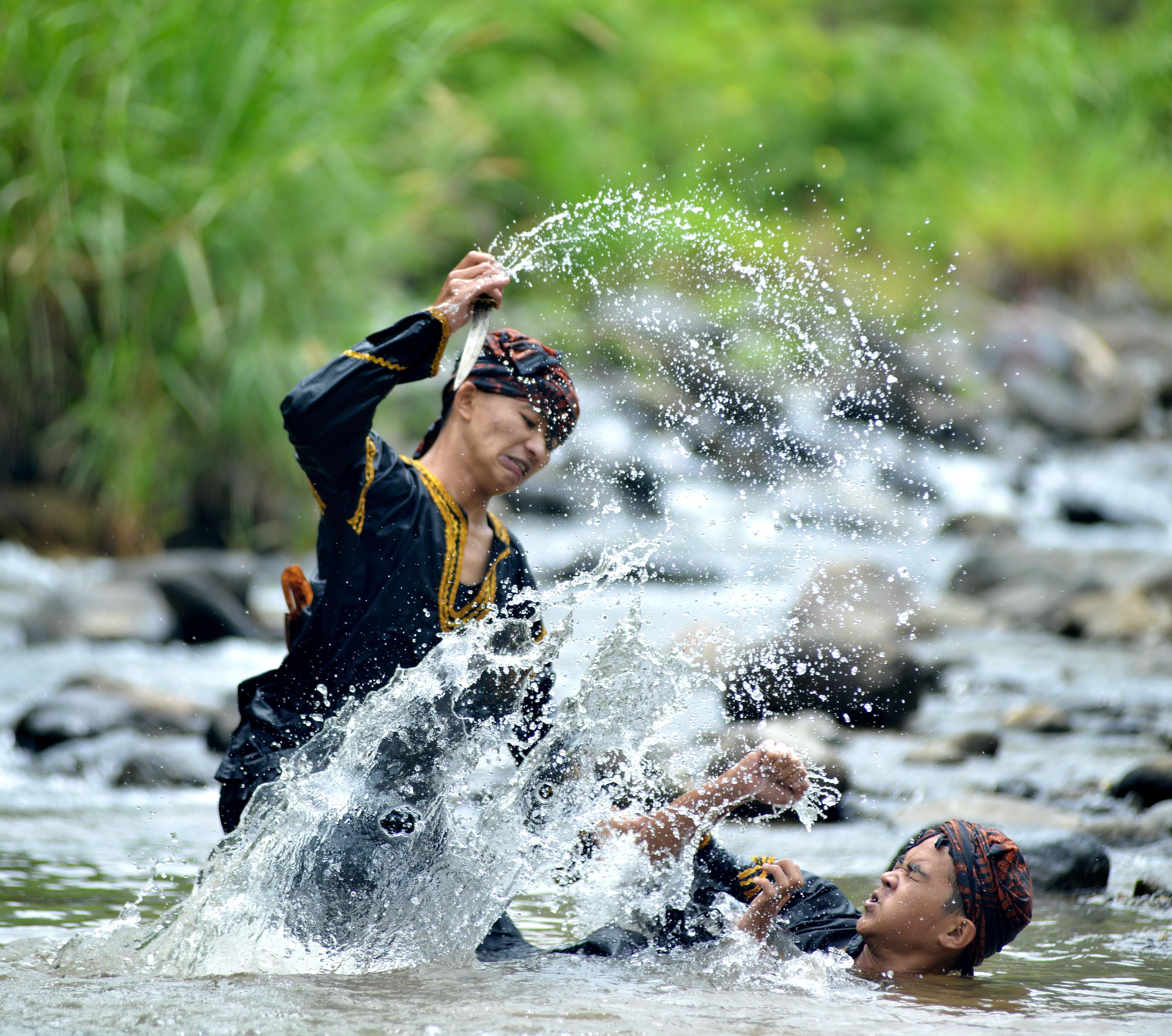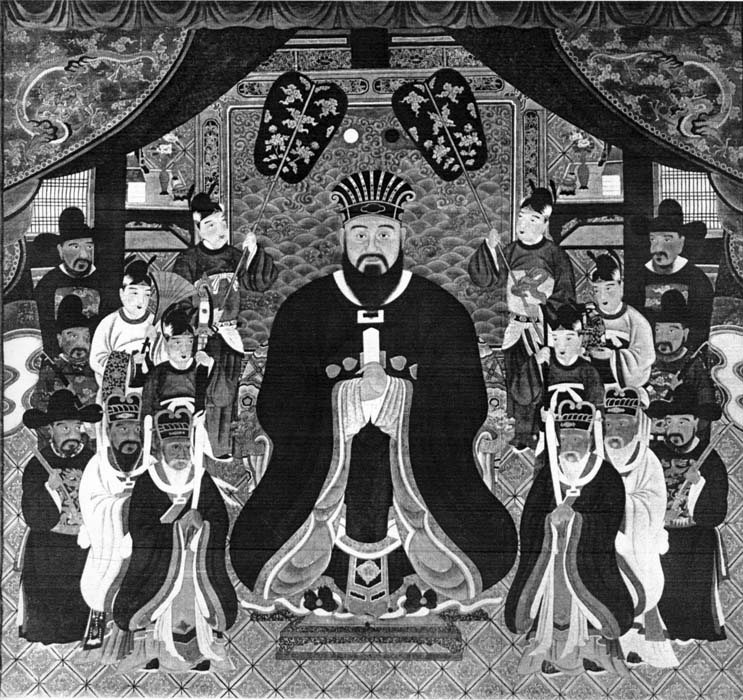|
Liu Seong Kuntao
The Liu Seong System is one of the many styles of Kuntao, which are hybrid martial arts systems derived from the cultures of Chinese Indonesia. The Liu Seong system was brought to America, from Indonesia, by Willem A. Reeders (1917-1990). Willem Reeders was of mixed heritage, being of Dutch and Chinese background, but raised in Indonesia. He received training in a variety of martial arts, no one knows how many exactly. His primary teacher was his great uncle Liu Seong, whose title he bore. His uncle taught him his family's Kuntao system, a sophisticated form of fighting which focuses on close range technique. Reeders also studied many silat systems, having over ten silat teachers. His silat styles included Tjikalong (Cikalong), Tjimande (Cimande), Harimau, and Serak, among others. Reeders was an extremely accomplished martial artist who was able to tie many focal elements of various arts together into a cohesive whole. The result is an art that although bearing many similari ... [...More Info...] [...Related Items...] OR: [Wikipedia] [Google] [Baidu] |
Kuntao
Kuntao or kuntau (, ) is a Min Nan, Hokkien term for the martial arts of the Chinese community of Southeast Asia, specifically the Malay Archipelago. It is most commonly practiced in and associated with Indonesia, Malaysia, the Philippines and Singapore. Etymology There are no standard hanzi for kuntao, but the most common reading is "way of the fist", from ''kun'' 拳 meaning fist and ''tao'' 道 meaning way. Less common readings may use the character ''kun'' 棍 meaning staff, or ''tou'' 头 meaning head, so that it could be translated as "way of the staff" or roughly "knowledge of fists". In Fujian and other southern areas, this term was originally used for Chinese martial arts in general and was synonymous with ''quanfa'' (拳法, Pe̍h-ōe-jī: kûn-hoat). The word is recorded in Classical Malay and Indonesian language, Indonesian, making it the oldest known term for Chinese martial arts in those languages, before the modern adoption of the term ''kungfu''. In English, and e ... [...More Info...] [...Related Items...] OR: [Wikipedia] [Google] [Baidu] |
Chinese Martial Arts
Chinese martial arts, commonly referred to with umbrella terms Kung fu (term), kung fu (; ), kuoshu () or wushu (sport), wushu (), are Styles of Chinese martial arts, multiple fighting styles that have developed over the centuries in Greater China. These fighting styles are often classified according to common traits, identified as "families" of martial arts. Examples of such traits include ''Shaolin kung fu, Shaolinquan'' () physical exercises involving Five Animals, All Other Animals () mimicry or training methods inspired by Chinese philosophies, Old Chinese philosophies, religions and legends. Styles that focus on qi manipulation are called ''Internal martial arts, internal'' (; ), while others that concentrate on improving muscle and cardiovascular fitness are called ''Styles of Chinese martial arts#External styles, external'' (; ). Geographical associations, as in ''northern'' (; ) and ''Nanquan (martial art), southern'' (; ), is another popular classification method. Ter ... [...More Info...] [...Related Items...] OR: [Wikipedia] [Google] [Baidu] |
Silat
Silat is the collective term for a class of martial arts from the Nusantara and surrounding geocultural areas of Southeast Asia. It is traditionally practised in Brunei, Indonesia, Malaysia, Singapore, Southern Thailand, Southern Philippines and Southern Vietnam. There are hundreds of different styles (''aliran'') and schools (''perguruan'') which tend to focus either on strikes, joint manipulation, weaponry, or some combination thereof. The word ''silat'' is used by Malay speakers throughout Southeast Asia, but it is officially called ''pencak silat'' in Indonesia. The term ''pencak silat'' has been adopted globally in reference to professional competitive silat for sport, similar to the Chinese word ''wushu''. Regional dialect names include ''penca'' (West Java), ''dika'' or ''padik'' (Thailand), ''silek'' (the Minangkabau pronunciation of silat), ''main-po'' or ''maen po'' (in the lower speech of Sundanese), and ''gayong'' or ''gayung'' (used in parts of Malaysia a ... [...More Info...] [...Related Items...] OR: [Wikipedia] [Google] [Baidu] |
Albuquerque Journal
The ''Albuquerque Journal'' is the largest newspaper in the U.S. state of New Mexico. History The ''Golden Gate'' newspaper was founded in June 1880. In the fall of 1880, the owner of the ''Golden Gate'' died and Journal Publishing Company was created. Journal Publishing changed the paper's name to ''Albuquerque Daily Journal'' and issued its first edition of the ''Albuquerque Daily Journal'' on October 14, 1880. The ''Daily Journal'' was first published in Old Town Albuquerque, but in 1882 the publication moved to a single room in the so-called new town (or expanded Albuquerque) at Second and Silver streets near the railroad tracks. It was published on a single sheet of newsprint, folded to make four pages. Those pages were divided into five columns with small headlines. Advertising appeared on the front page. The ''Daily Journal'' was published in the evening until the first Territorial Fair opened in October 1881. On October 4 of that year, a morning Journal was published in ... [...More Info...] [...Related Items...] OR: [Wikipedia] [Google] [Baidu] |
Tai Chi
is a Chinese martial art. Initially developed for combat and self-defense, for most practitioners it has evolved into a sport and form of exercise. As an exercise, tai chi is performed as gentle, low-impact movement in which practitioners perform a series of deliberate, flowing motions while focusing on deep, slow breaths. Often referred to as " meditation in motion", tai chi aims to concentrate and balance the body's purported (vital energy), providing benefits to mental and physical health. Many forms of tai chi are practiced, both traditional and modern. While the precise origins are not known, the earliest documented practice is from Chen Village and Zhabao Village in Henan on the North China Plain, a region where centuries of rebellions, invasions, and adverse economic and social conditions nurtured the development of a wide range of martial arts, including those of the Shaolin Monastery on Mount Song at the western edge of the plain. Most modern styles trace th ... [...More Info...] [...Related Items...] OR: [Wikipedia] [Google] [Baidu] |
Kuntao
Kuntao or kuntau (, ) is a Min Nan, Hokkien term for the martial arts of the Chinese community of Southeast Asia, specifically the Malay Archipelago. It is most commonly practiced in and associated with Indonesia, Malaysia, the Philippines and Singapore. Etymology There are no standard hanzi for kuntao, but the most common reading is "way of the fist", from ''kun'' 拳 meaning fist and ''tao'' 道 meaning way. Less common readings may use the character ''kun'' 棍 meaning staff, or ''tou'' 头 meaning head, so that it could be translated as "way of the staff" or roughly "knowledge of fists". In Fujian and other southern areas, this term was originally used for Chinese martial arts in general and was synonymous with ''quanfa'' (拳法, Pe̍h-ōe-jī: kûn-hoat). The word is recorded in Classical Malay and Indonesian language, Indonesian, making it the oldest known term for Chinese martial arts in those languages, before the modern adoption of the term ''kungfu''. In English, and e ... [...More Info...] [...Related Items...] OR: [Wikipedia] [Google] [Baidu] |
Baguazhang
''Baguazhang'' () is one of the three main Chinese martial arts of the '' Wudang'' school, the other two being tai chi and '' xingyiquan''. It is more broadly grouped as an internal practice (or ''neijia''). ''Baguazhang'' literally means "eight trigram palm", referring to the ''bagua'' "trigrams" of the ''I Ching'', one of the canons of Taoism. History The creation of ''baguazhang'' as a formalized martial art is attributed to Dong Haichuan, who is said to have learned it from Taoist and Buddhist masters in the mountains of rural China during the early 19th century. Many Chinese authorities do not accept the Buddhist origin, instead maintaining that those teachers were purely Taoist in origin, the evidence lying in ''baguazhangs frequent reference to core concepts central to Taoism, such as yin and yang theory, ''I Ching'', and Taoism's most distinctive paradigm, the ''bagua'' diagram. The attribution to Buddhist teachers came from the second generation teachers, i.e. Dong Hai ... [...More Info...] [...Related Items...] OR: [Wikipedia] [Google] [Baidu] |
Neijia
''Neijia'' ( 內家) is the collective name for the internal Chinese martial arts. It relates to those martial arts occupied with spiritual, mental or '' qi''-related aspects, as opposed to an " external" approach focused on physiological aspects. The distinction dates to the 17th century, but its modern application is due to publications by Sun Lutang, dating to the period of 1915 to 1928. '' Neijin'' is developed by using '' neigong'' or "internal changes", contrasted with ''waigong'' ( 外 功; ''wàigōng'') or "external exercises" . '' Wudangquan'' is a more specific grouping of internal martial arts named for their association in popular Chinese legend with the Taoist monasteries of the Wudang Mountains in Hubei province. These styles were enumerated by Sun Lutang as tai chi, '' xingyiquan'' and '' baguazhang'', but most also include '' bajiquan'' and the legendary Wudang Sword. Some other Chinese arts, not in the wudangquan group, such as ''qigong'', '' liuhebafa'', '' ... [...More Info...] [...Related Items...] OR: [Wikipedia] [Google] [Baidu] |
Japan
Japan is an island country in East Asia. Located in the Pacific Ocean off the northeast coast of the Asia, Asian mainland, it is bordered on the west by the Sea of Japan and extends from the Sea of Okhotsk in the north to the East China Sea in the south. The Japanese archipelago consists of four major islands—Hokkaido, Honshu, Shikoku, and Kyushu—and List of islands of Japan, thousands of smaller islands, covering . Japan has a population of over 123 million as of 2025, making it the List of countries and dependencies by population, eleventh-most populous country. The capital of Japan and List of cities in Japan, its largest city is Tokyo; the Greater Tokyo Area is the List of largest cities, largest metropolitan area in the world, with more than 37 million inhabitants as of 2024. Japan is divided into 47 Prefectures of Japan, administrative prefectures and List of regions of Japan, eight traditional regions. About three-quarters of Geography of Japan, the countr ... [...More Info...] [...Related Items...] OR: [Wikipedia] [Google] [Baidu] |
Martial Arts
Martial arts are codified systems and traditions of combat practiced for a number of reasons such as self-defence; military and law enforcement applications; combat sport, competition; physical, mental, and spiritual development; entertainment; and the preservation of a nation's intangible cultural heritage. The concept of martial arts was originally associated with East Asian tradition, but subsequently the term has been applied to practices that originated outside that region. Etymology "Martial arts" is a direct English translation of the Sino-Japanese word (, ). Literally, it refers to "武 martial" and "芸 arts". The term ''martial arts'' was popularized by mainstream popular culture during the 1960s to 1970s, notably by Hong Kong action cinema, Hong Kong martial arts films (most famously those of Bruce Lee) during the so-called "chopsocky" wave of the early 1970s. According to John Clements, the term '':wikt:martial art, martial arts'' itself is derived from an older ... [...More Info...] [...Related Items...] OR: [Wikipedia] [Google] [Baidu] |
Okinawa Prefecture
is the southernmost and westernmost prefecture of Japan. It consists of three main island groups—the Okinawa Islands, the Sakishima Islands, and the Daitō Islands—spread across a maritime zone approximately 1,000 kilometers east to west and 400 kilometers north to south. Despite a modest land area of 2,281 km² (880 sq mi), Okinawa’s territorial extent over surrounding seas makes its total area nearly half the combined size of Honshu, Shikoku, and Kyushu. Of its 160 Island, islands, 49 are inhabited. The largest and most populous island is Okinawa Island, which hosts the capital city, Naha, as well as major urban centers such as Okinawa (city), Okinawa, Uruma, and Urasoe, Okinawa, Urasoe. The prefecture has a subtropical climate, characterized by warm temperatures and high rainfall throughout the year. People from the Ryukyu Islands, Nansei Islands, including Okinawa Island, Okinawa, the Sakishima Islands, and parts of Kagoshima Prefecture, are often collectively referred ... [...More Info...] [...Related Items...] OR: [Wikipedia] [Google] [Baidu] |
Karate
(; ; Okinawan language, Okinawan pronunciation: ), also , is a martial arts, martial art developed in the Ryukyu Kingdom. It developed from the Okinawan martial arts, indigenous Ryukyuan martial arts (called , "hand"; ''tī'' in Okinawan) under the influence of Chinese martial arts. While modern karate is primarily a striking art that uses punches and kicks, traditional karate training also employs Throw (grappling), throwing and joint locking techniques. A karate practitioner is called a . Beginning in the 1300s, early Chinese martial arts, Chinese martial artists brought their techniques to Okinawa. Despite the Ryukyu Kingdom being turned into a puppet state by Japanese samurai in 1609, after the Invasion of Ryukyu, its cultural ties to China remained strong. Since Ryukyuans were banned from carrying swords under samurai rule, groups of young aristocrats created unarmed combat methods as a form of resistance, combining Chinese and local styles of martial arts. Training emph ... [...More Info...] [...Related Items...] OR: [Wikipedia] [Google] [Baidu] |





